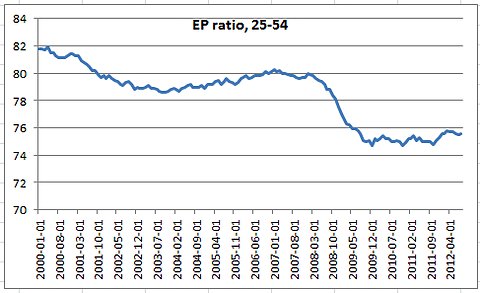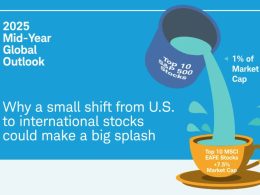Guest post by Azizonomics.
The Keynesians and Monetarists who have so berated the Federal Reserve and demanded more asset purchases and a nominal GDP target to get GDP level up to the long-term growth trend have essentially got their wish.
This is a radical departure:
To support a stronger economic recovery and to help ensure that inflation, over time, is at the rate most consistent with its dual mandate, the Committee agreed today to increase policy accommodation by purchasing additional agency mortgage-backed securities at a pace of $40 billion per month. The Committee also will continue through the end of the year its program to extend the average maturity of its holdings of securities as announced in June, and it is maintaining its existing policy of reinvesting principal payments from its holdings of agency debt and agency mortgage-backed securities in agency mortgage-backed securities. These actions, which together will increase the Committee’s holdings of longer-term securities by about $85 billion each month through the end of the year, should put downward pressure on longer-term interest rates, support mortgage markets, and help to make broader financial conditions more accommodative.
The Committee will closely monitor incoming information on economic and financial developments in coming months. If the outlook for the labor market does not improve substantially, the Committee will continue its purchases of agency mortgage-backed securities, undertake additional asset purchases, and employ its other policy tools as appropriate until such improvement is achieved in a context of price stability. In determining the size, pace, and composition of its asset purchases, the Committee will, as always, take appropriate account of the likely efficacy and costs of such purchases.
I tweeted this earlier in favour of the idea that the Fed would adopt open-ended asset purchases:
If Bernanke’s rationale for QE has been Okun’s law (increases in NGDP decrease unemployment) then NGDPLT seems likelier than most think.
— John Aziz (@azizonomics) September 13, 2012
Those who didn’t anticipate the possibility of open-ended asset purchases should have looked much more closely at Bernanke’s words at Jackson Hole:
If we are willing to take as a working assumption that the effects of easier financial conditions on the economy are similar to those observed historically, then econometric models can be used to estimate the effects of LSAPs on the economy. Model simulations conducted at the Federal Reserve generally find that the securities purchase programs have provided significant help for the economy. For example, a study using the Board’s FRB/US model of the economy found that, as of 2012, the first two rounds of large scale asset purchases may have raised the level of output by almost 3 percent and increased private payroll employment by more than 2 million jobs, relative to what otherwise would have occurred.
Essentially, this is nominal GDP level targeting. The reason why Bernanke has framed it in terms of lowering unemployment is that his mandate relates to price stability and unemployment, not nominal GDP level. But as Bernanke himself noted in his academic days:
Estimates based on data from more recent years give about a 2% decrease in output for every 1% increase in unemployment.
To those who accept Okun’s Law, raising nominal GDP level and lowering unemployment are effectively the same thing. Bernanke seems to believe unemployment will fall in a (roughly) linear fashion as asset purchases increase. By itself, this is a problematic assumption as the past is not an ideal guide to the future.
Yet more importantly the data shows no real job recovery in the post-2008 quantitatively-eased world. This is the prime-age employment-population ratio:
And even if unemployment falls without triggering large-scale inflation as per the Fed’s design, this is no cure for the significant long-term challenges that America faces.
As I wrote back in November 2011, when nominal GDP targeting was just appearing on the horizon America faces far greater challenges than can be solved with a monetary injection. Financial fragility, moral hazard, energy dependency, resource dependency,deindustrialisation, excessive private debt, crumbling infrastructure, fiscal uncertainty, and a world-policeman complex. The underlying problems are not ones that Bernanke really has power to address.
And how long before rising food prices cause more riots and revolutions? After, all handing over more firepower to speculators tends to result in increased speculation.
Meanwhile, US creditors and dollar-holders (particularly China) would seem from past comments to be deeply unhappy with this decision.
President Hu Jintao:
The monetary policy of the United States has a major impact on global liquidity and capital flows and therefore, the liquidity of the US dollar should be kept at a reasonable and stable level.
The dollars they accrued will lose purchasing power to every new dollar printed and handed over to the American banks in exchange for mortgage backed securities. The Chinese perspective on this will be that Bernanke is essentially engaging in theft. On the other hand, they should have considered this likelihood before they went about accruing a humungous pile of fiat dollars that can be duplicated at a press of a button. No, matter; China won’t get burnt like this again.
As PBOC official Zhang Jianhua noted:
No asset is safe now. The only choice to hedge risks is to hold hard currency — gold.
Chances of future trade and currency wars between the United States and China seem to be rising as fast as Chinese gold accruals.
Copyright © Azizonomics













